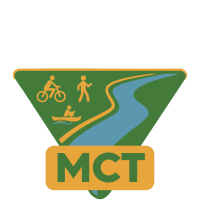Tri-State Trails | Mill Creek Triangle Trail Feasibility Study
Tri-State Trails | Mill Creek Triangle Trail Feasibility Study
THANK YOU FOR VISITING!
Tri-State Trails is leading the Mill Creek Triangle Trail Feasibility Study, a multi-jurisdictional effort to develop a 40+ mile regional trail network in central and northern Hamilton County. The vision for the Mill Creek Triangle Trail is to create an equitable transportation and recreation amenity that connects residential neighborhoods to the Mill Creek; to local business districts and key destinations; to Great Parks’ regional greenspaces like Winton Woods, Glenwood Gardens, and Sharon Woods; and to the planned CROWN 34-mile trail loop in Cincinnati.
We want your feedback! The project team has developed initial proposed routes and alternatives for the Mill Creek Triangle Trail network. Tri-State Trails is hosting an in-person Public Open House on May 1, 2024 to present an overview of the project and gather input on the proposed trail route alignments. The same information that is being presented at the Public Open House is covered in this Virtual Open House. Please navigate through the tabs below to view proposed trail routes and complete the survey. You can view all the project materials in the documents section below.
Public Open House
May 1, 2024, 5:30-7:30 PM
Sharon Centre at Sharon Woods
11450 Lebanon Rd, Sharonville, OH 45241
If you have any questions or would like more information, please contact:
PROJECT PARTNERS:
The Mill Creek Triangle Feasibility Study is being planned in partnership with seventeen local government agencies and eight community organizations. This project is made possible thanks to the financial support and/or partnership from the following organizations:
Great Parks • Mill Creek Alliance • Hamilton County Transportation Improvement District • Hamilton County Regional Planning Commission • Ohio Department of Transportation, District 8 • City of Sharonville • Village of Evendale • City of Reading • Village of Glendale • Village of Woodlawn • City of Wyoming • Village of Lincoln Heights • Village of Arlington Heights • Village of Lockland • Springfield Township • City of Blue Ash • First Suburbs Consortium of Southwest Ohio • Millcreek Valley Conservancy District • Connecting Active Communities Coalition • Wyoming Cycling Foundation
HOW IT WORKS
This site is a self-guided tour through a series of tabs highlighting options under consideration in this feasibility study. Opportunities are provided throughout for you to share feedback and comments. Your input will be used to guide decision-making and identify preferred design alternatives. This Virtual Open House will be open for comment 24 hours a day for 45 days, until June 10, 2024.
Please begin by reviewing the Project Overview discussion in the next section. To advance between tabs, click on the green Continue button located at the bottom of the page. You can also move between pages by clicking the tabs located at the top of the discussion section. If you would like to view larger versions of any of the graphics, simply click on the image. Copies of project materials are posted under the Documents section, located on the right-hand side of the screen.
If you need interpretation or translation services or other reasonable accommodations to participate in this Virtual Open House, review materials, or provide comment, please contact Brad Bowers, Tri-State Trails Project Manager, at (513) 655-3981 or brad@tristatetrails.org.
Frequently Asked Questions
Shared use paths / multi-use trails are welcoming public spaces for everyone to get outside and be active. Here’s some of the benefits to building a connected trail and bikeway network for the tri-state region. The benefits of shared use trails for communities include:
Expanded transportation options
Enhanced neighborhood and community connectivity
Encourges economic deveopment
Improve public health
Promote Environmental Sustainability
Connect recreation facilities
Increase transportation equity
Attract and retain talent
